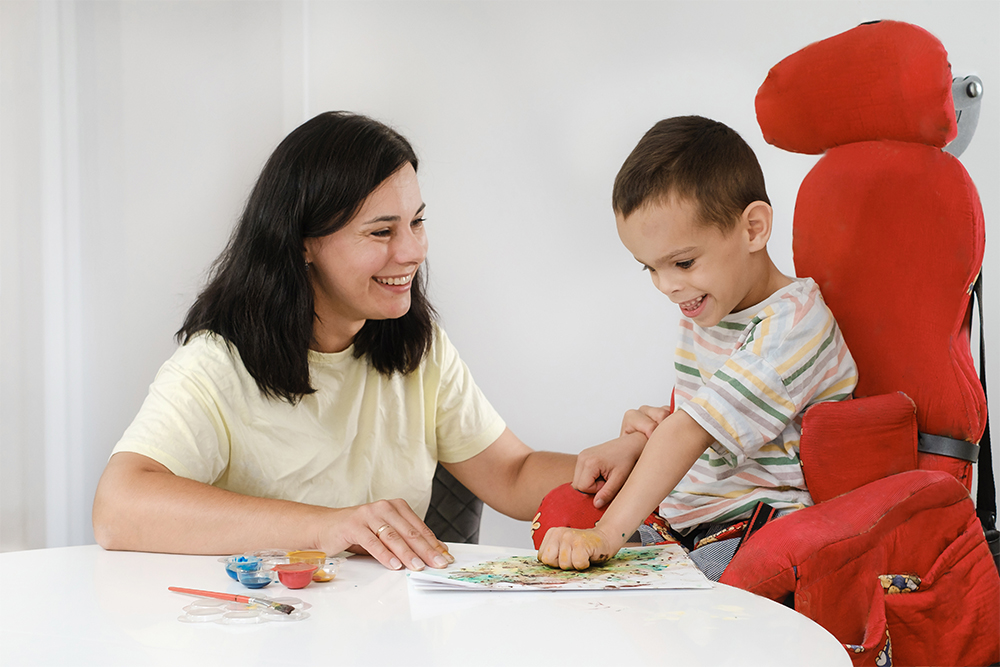Strategies, Techniques, and Sensory Teaching Aids for Supporting Children with ADHD, Autism and Sensory Sensitivities

Educating children with ADHD, autism, and sensory sensitivities requires a multifaceted approach that includes specialized teaching strategies, sensory teaching devices, and even innovative seating options. These methods are not only inclusive but are also backed by research.
Understanding the Needs
To effectively support children with ADHD, autism, and sensory sensitivities, it’s crucial to comprehend their unique needs. Research has provided invaluable insights into the characteristics and challenges associated with these conditions. For instance, children with ADHD often struggle with attention and impulse control, while those with autism may face difficulties in social interaction and communication. Sensory sensitivities can lead to sensory overload, affecting comfort and focus in traditional classrooms.
Individualized Education Plans (IEPs)
One of the cornerstones of effective support is the implementation of Individualized Education Plans (IEPs). These personalized plans encompass strategies and accommodations tailored to each child. Research overwhelmingly supports the effectiveness of IEPs in improving academic outcomes and reducing behavioral issues in students with special needs.
Sensory-Friendly Environments and Teaching Aids
Creating sensory-friendly classrooms and utilizing sensory teaching devices is instrumental in supporting students with sensory sensitivities. Research underscores the significant impact of such environments and teaching aids on students’ well-being and learning. Sensory teaching aids such as tactile tools, sensory mats, and sensory bins are invaluable in helping students self-regulate and engage effectively.
Assistive Technology
The integration of technology and assistive devices in the classroom plays a pivotal role in supporting children with ADHD, autism, and sensory sensitivities. Research highlights the value of technology as a teaching tool, especially for students with special needs. Educational apps, specialized software, and assistive devices can cater to individual needs, offering interactive and tailored learning experiences.
Specialist Seating
Specialist seating options, including ergonomic chairs and sensory-friendly seating, are gaining prominence in classrooms. These chairs are designed to offer comfort and support for students with sensory sensitivities. Research suggests that specialist seating can positively impact a student’s ability to focus, maintain better posture, and reduce discomfort during long periods of learning.
Behavioral Interventions
Addressing specific challenges associated with these conditions requires the implementation of behavioral interventions. Research supports the effectiveness of these strategies in improving behavior and academic performance. Techniques such as positive reinforcement, social stories, and cognitive-behavioral interventions have proven valuable in supporting students with ADHD, autism, and sensory sensitivities.
Social-Emotional Learning
Social-Emotional Learning (SEL) is integral to the holistic development of children with special needs. Research emphasizes the importance of SEL programs in enhancing students’ well-being, social skills, and emotional regulation. SEL fosters self-awareness, empathy, and positive relationships, which are vital for their success.
Inclusive Education
Inclusive education models aim to promote integration and acceptance in the classroom. Research indicates that inclusive classrooms offer numerous benefits, including improved academic outcomes and social development for students with ADHD, autism, and sensory sensitivities. While challenges exist, proper training and support for educators can effectively address them.
In the pursuit of quality education, it is imperative to recognize and accommodate the unique needs of every student. The strategies, techniques, sensory teaching devices, and specialist seating discussed in this article are not only promising but are substantiated by research. By understanding these needs and implementing individualized strategies, we create an inclusive environment where every child can learn, grow, and thrive.


